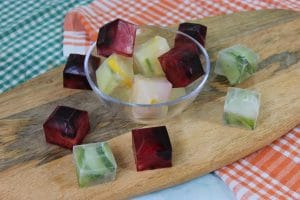Homemade Argentinian Medialunas
Important Note: When you buy through our links, we may earn a commission. As an Amazon Associate we earn from qualifying purchases. Content, pricing, offers and availability are subject to change at any time - more info.

Ingredients
- 3 cups all-purpose flour
- ¼ cup granulated sugar
- ½ tsp salt
- 1 cup unsalted butter cold, in small pieces
- ½ cup whole milk
- ¼ cup warm water
- 1 tbsp active dry yeast
- 1 tsp honey
- 1 large egg beaten
- 1 tbsp heavy cream
- ¼ cup powdered sugar for dusting
Instructions
- Mix flour, sugar, and salt in a large bowl. Add butter and work into flour until coarse crumbs form.
- Heat milk in a saucepan until warm. Set aside.
- Combine warm water, yeast, and honey in a small bowl. Let sit for 5 minutes until frothy.
- Add yeast mixture and milk to flour mixture. Stir until soft dough forms. Knead on a floured surface for 5 minutes.
- Place dough in a greased bowl, cover, and let rest for 1 hour.
- Preheat oven to 375°F (190°C) and line two baking sheets with parchment paper.
- Roll out dough to 1/4 inch thickness. Cut into triangles (3-inch base, 5-inch height).
- Roll triangles from base to point, forming crescents. Place on baking sheets, spaced 2 inches apart.
- Whisk beaten egg and heavy cream for egg wash. Brush tops of medialunas with egg wash.
- Bake for 15 minutes, until golden brown and puffed.
- Cool on baking sheets, then transfer to a wire rack.
- Dust cooled medialunas with powdered sugar and serve.
Nutrition
Imagine waking up to the heavenly aroma of freshly baked pastries with a tantalizingly flaky, buttery texture that simply melts in your mouth. That’s what you’ll get when you whip up a batch of these delightful Argentinian Medialunas! These crescent-shaped beauties are a staple in Argentina—one bite, and you’ll understand why they’ve captured the hearts and taste buds of locals and visitors alike. If you’re a fan of French croissants but looking for a slightly sweeter and richer twist, you’re in for a treat. These scrumptious pastries are destined to become your new breakfast and coffee-time favorite.
Not only are Medialunas a delicious way to indulge your taste buds, they’re also an opportunity to explore the rich and diverse culinary heritage of Argentina. The technique of folding the dough to achieve those irresistibly flaky layers may even inspire you to delve deeper into the art of pastry-making. And who knows? You might just become the go-to pastry chef amongst your friends and family! So, why not take a leap and give this fabulous recipe a try? After all, as they say in Argentina, La vida es corta y el mundo es ancho (Life is short and the world is wide). Time to roll up your sleeves and immerse yourself in the world of Medialunas in the next section!
Yield & Servings:
– Makes about 24 medialunas
Timing:
– Prep time: 1 hour
– Cook time: 15 minutes
– Resting time: 2 hours
Ingredients:
– 3 cups all-purpose flour
– ¼ cup granulated sugar
– ½ teaspoon salt
– 1 cup unsalted butter, cold and cut into small pieces
– ½ cup whole milk
– ¼ cup warm water
– 1 tablespoon active dry yeast
– 1 teaspoon honey
– 1 large egg, beaten
– 1 tablespoon heavy cream
– ¼ cup powdered sugar (for dusting)
Notable Equipment & Tools:
– Large mixing bowl
– Rolling pin
– Pastry brush
– Baking sheets
– Parchment paper
Step-by-Step Instructions:
Step 1: In a large bowl, whisk flour, granulated sugar, and salt together.
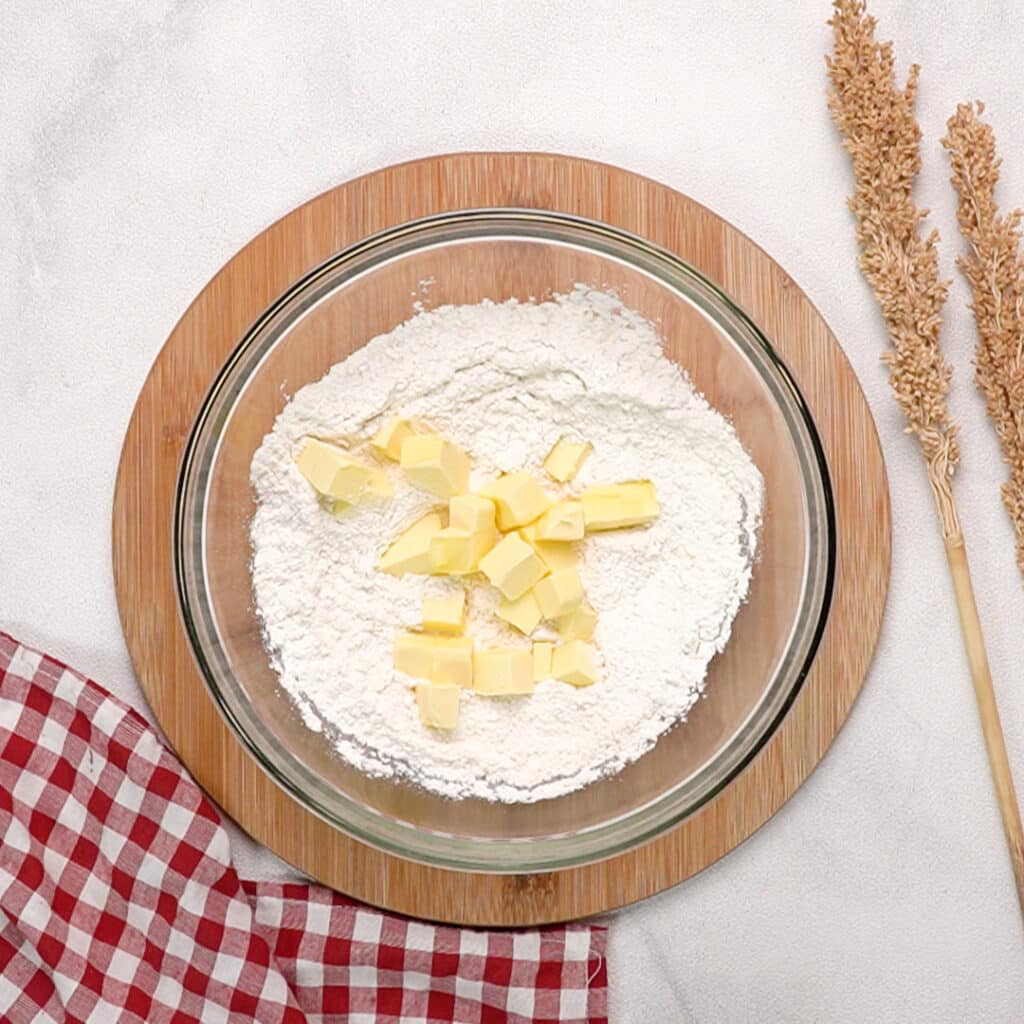
In a large mixing bowl, whisk together the flour, granulated sugar, and salt. Add the cold butter pieces and use your fingers to work the butter into the flour mixture until it resembles coarse crumbs.
Step 2: Gently heat milk in a small saucepan until warm.
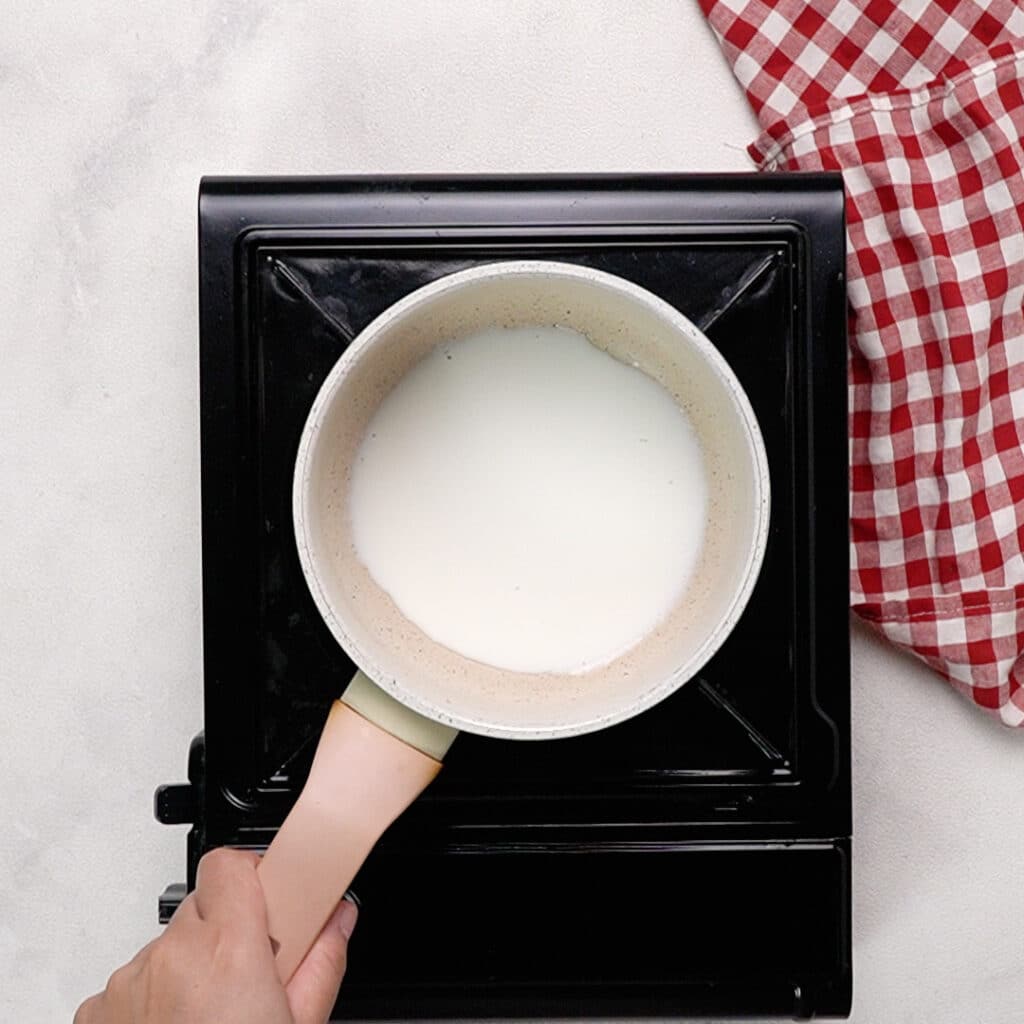
In a small saucepan, heat the milk over low heat until it is warm but not hot. Remove from heat and set aside.
Step 3: Mix warm water, active dry yeast, and honey in a small bowl.
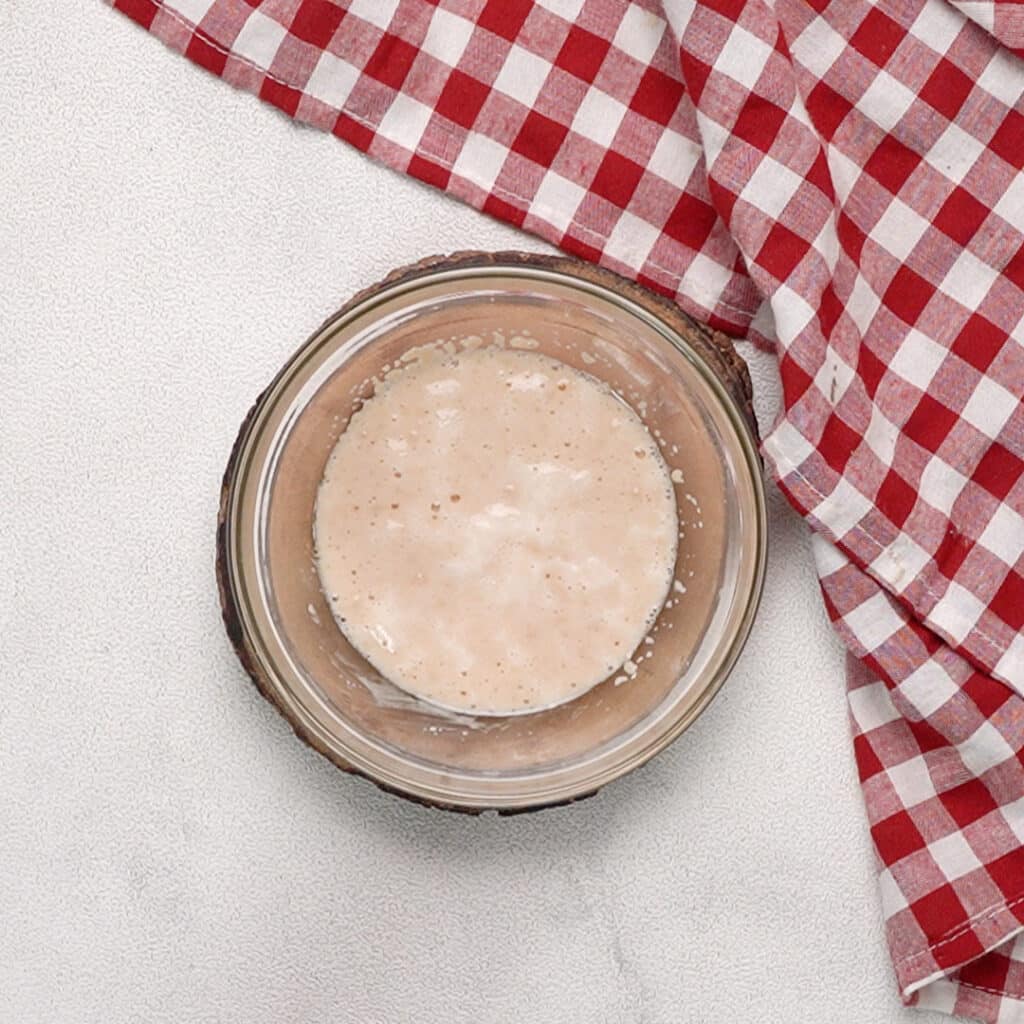
In a small bowl, combine the warm water, active dry yeast, and honey. Let the mixture sit for about 5 minutes, or until it becomes frothy.
Step 4: Add the yeast mixture and warm milk to the flour mixture.

Pour the yeast mixture and warm milk into the flour mixture. Stir until a soft dough forms. Knead the dough on a lightly floured surface for about 5 minutes, or until it becomes smooth and elastic.
Step 5: Put dough in a greased bowl, cover with a towel, and let rest for 1 hour until doubled in size.

Place the dough in a lightly greased bowl, cover with a clean towel, and let it rest for 1 hour, or until it has doubled in size. Preheat your oven to 375°F (190°C) and line two baking sheets with parchment paper.
Step 6: Roll out the dough on a lightly floured surface to a 1/4 inch thickness.

On a lightly floured surface, roll out the dough to a thickness of about 1/4 inch. Use a sharp knife or pizza cutter to cut the dough into triangles with a 3-inch base and 5-inch height.
Step 7: Begin at each triangle’s base, roll the dough tightly towards the point to form a crescent shape.

Starting at the base of each triangle, roll the dough tightly towards the point, forming a crescent shape. Place the medialunas on the prepared baking sheets, leaving about 2 inches of space between each one.
Step 8: Whisk together beaten egg and heavy cream in a small bowl for an egg wash.
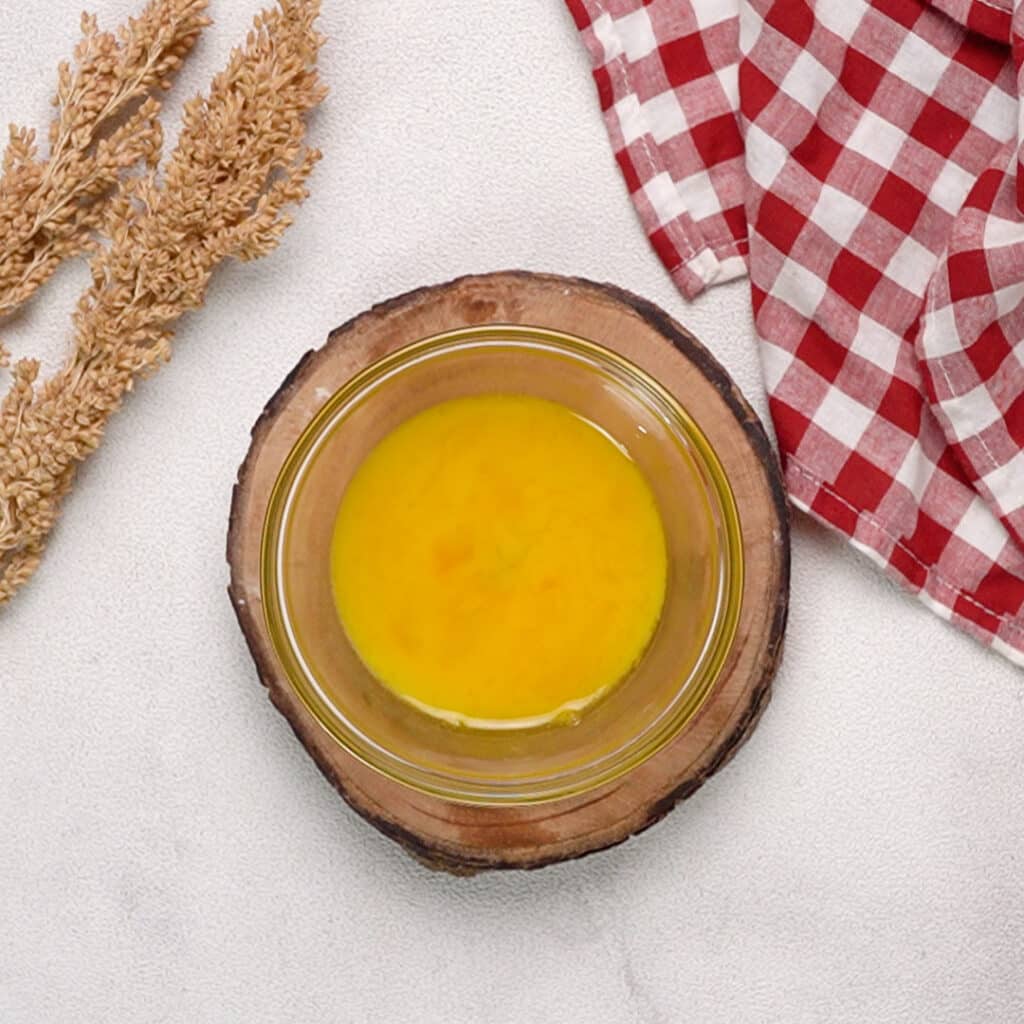
In a small bowl, whisk together the beaten egg and heavy cream to create an egg wash. Use a pastry brush to lightly coat the tops of the medialunas with the egg wash.
Step 9: Bake medialunas until golden brown and puffed.
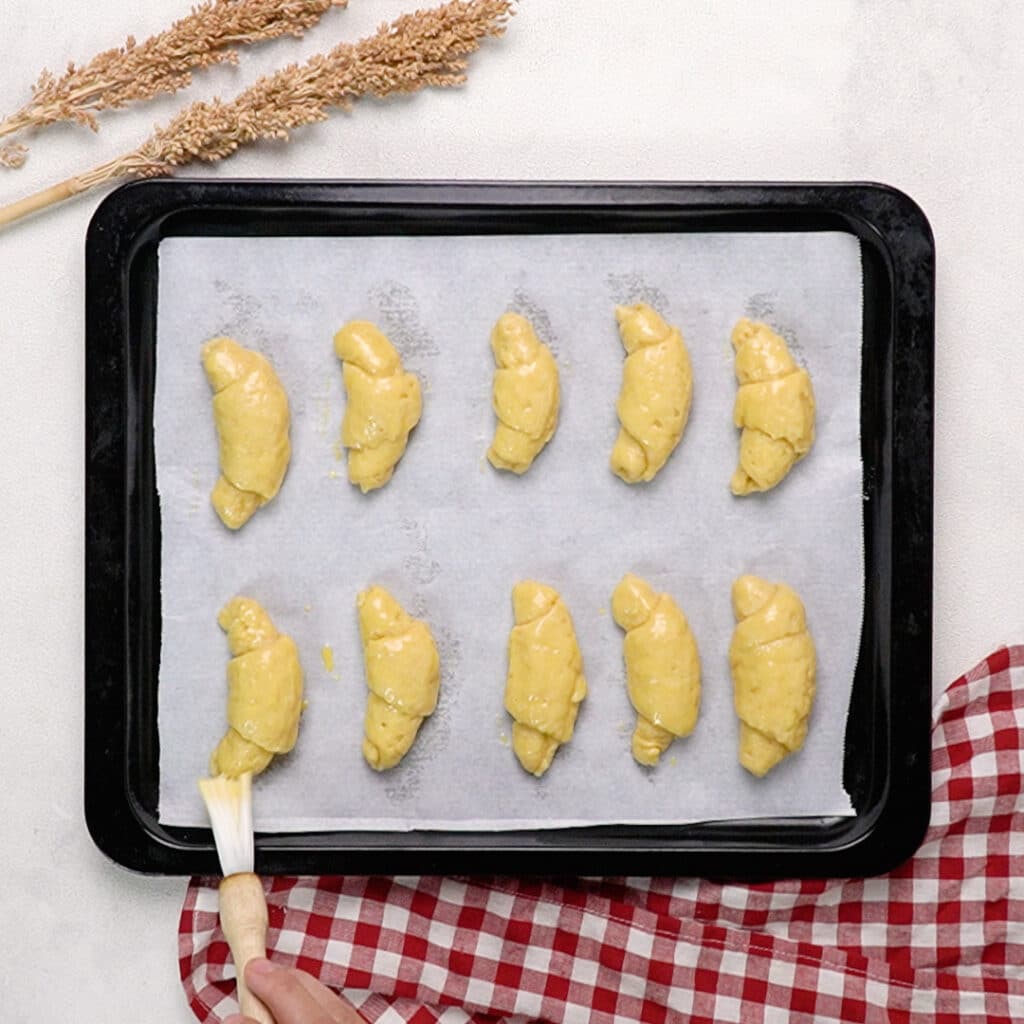
Bake the medialunas in the preheated oven for 15 minutes, or until they are golden brown and puffed up.
Step 10: Cool medialunas briefly on baking sheets, then transfer to a wire rack to cool fully.
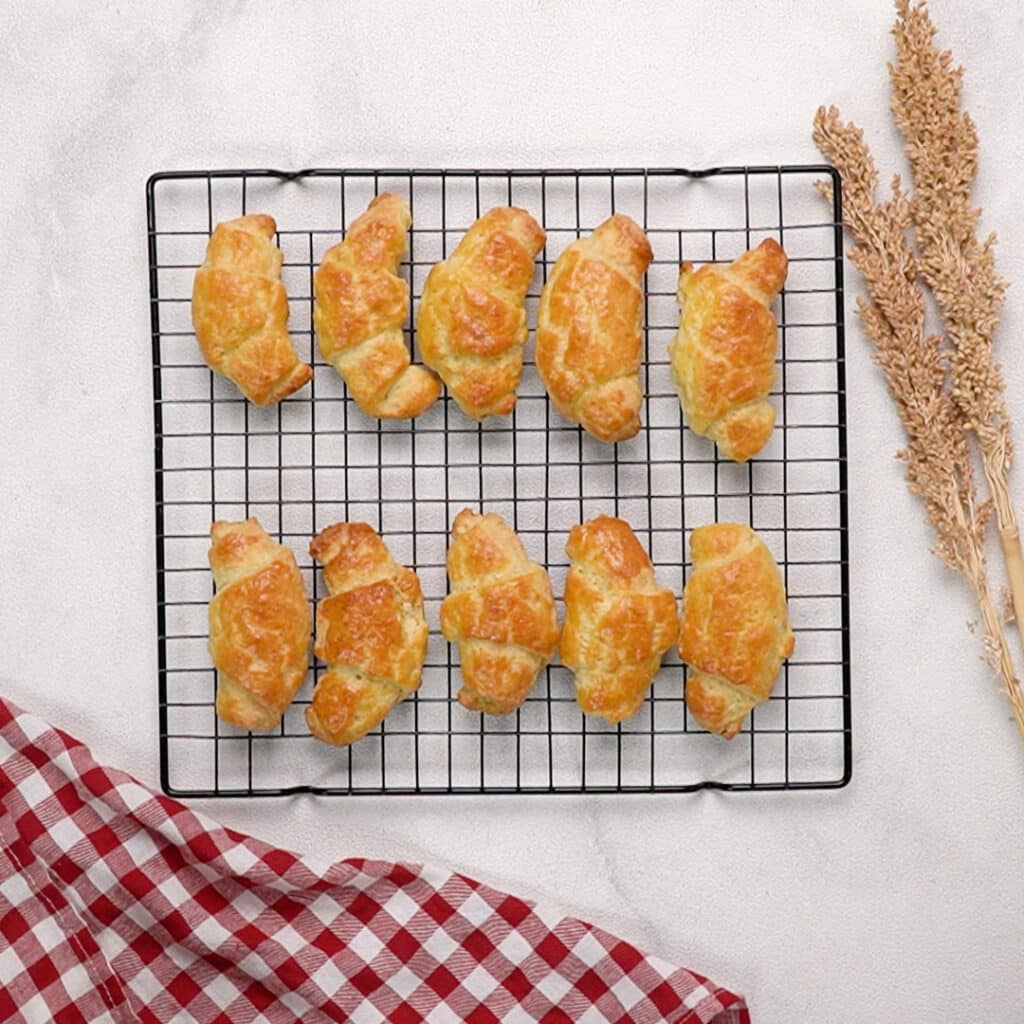
Remove the medialunas from the oven and let them cool on the baking sheets for a few minutes before transferring them to a wire rack to cool completely.
Step 11: Enjoy your Argentinian Medialunas!

Once the medialunas have cooled, dust them with powdered sugar and serve. Enjoy your delicious Argentinian Medialunas!
Notes
- Preparation and resting times in this recipe may vary. If you’re new to baking, the kneading, rolling, cutting, and shaping of the dough might extend the prep time beyond one hour. Additionally, the dough’s doubling time can be affected by kitchen conditions like temperature and humidity. Ensure the dough has fully doubled in size before proceeding.
Substitutions & Alternatives
Fear not, dear home chefs, for the world of medialunas is filled with versatility and opportunities to adapt this delightful treat to your personal tastes and dietary preferences! Let’s explore some clever substitutions and alternatives that will keep your culinary journey exciting and delicious.
Flour Power: If you’re looking to add a bit of nutritional oomph to your medialunas or need a gluten-free option, swap out the all-purpose flour for an equal amount of whole wheat flour or gluten-free all-purpose flour. Your taste buds will hardly notice the difference, but your body will thank you for the extra nutrients.
Dairy Dares: Dairy-free or vegan? No problem! Replace the whole milk with your favorite non-dairy milk, such as almond, soy, or oat milk. As for the butter, use a vegan butter substitute or even coconut oil for a hint of tropical flair. Just make sure it’s cold and cut into small pieces, as our original recipe recommends.
Sweet Swap: Looking to add some variety to your sweetener game? Try using an equal amount of maple syrup, agave nectar, or even molasses in place of the granulated sugar. You can also use a sugar substitute, but be sure to check the conversion ratios for the specific brand you’re using.
Yeast Feast: In a pinch and can’t find active dry yeast? Instant yeast has got your back! Use the same amount (1 tablespoon), but skip the warm water and honey step, as instant yeast doesn’t need to be activated. Simply add it to the flour mixture along with the warm milk, and you’ll be on your way to fluffy, pillowy medialunas in no time!
Egg-citing Options: If you’re vegan or have an egg allergy, don’t let that stop you from enjoying these Argentinian delights! You can create an egg wash with a mixture of non-dairy milk and a touch of maple syrup or agave nectar, or even use a store-bought vegan egg substitute.
Heavy Cream Dream: Need a heavy cream alternative? Look no further than coconut cream, which brings a rich and velvety texture to your egg wash. Plus, it adds a subtle hint of coconut goodness that takes your medialunas to a whole new level of deliciousness.
With these substitutions and alternatives, you can transform your Argentinian Medialunas into a satisfying and customized treat that accommodates your unique preferences and dietary needs. Happy baking, kitchen adventurers!
Storage & Reheating
We know it’s hard to resist devouring all 24 of these scrumptious Argentinian Medialunas in one sitting, but should you find yourself with leftovers, fear not! Storing and reheating these crescent-shaped delights is a piece of cake (or, well, pastry).
To store your Medialunas, simply place them in an airtight container or a resealable plastic bag. If you want to channel your inner abuela, you can also wrap them individually in plastic wrap or aluminum foil. Medialunas can be stored at room temperature for up to 2 days, making them perfect for savoring with your morning café con leche or as an afternoon snack. For a longer storage solution, you can also freeze them for up to 3 months. Just make sure to label the container with the date, so you know when it’s time to bid adios to any leftovers.
Now, let’s talk about reheating these beauties. Everyone knows that there’s nothing quite like a warm Medialuna, and luckily, it’s easy to bring them back to life. To reheat your room temperature Medialunas, simply preheat your oven to 350°F (175°C) and place the pastries on a baking sheet lined with parchment paper. Give them a quick 5-minute bake, and you’re good to go! For our frozen Medialuna enthusiasts, you can let them thaw at room temperature for about an hour before following the same reheating process. Alternatively, you can also wrap them in aluminum foil and bake at 350°F (175°C) for 10-15 minutes straight from the freezer – it’s like summoning a warm Argentinian embrace right into your kitchen!
Once your Medialunas are warmed to perfection and dusted with a fresh layer of powdered sugar, it’s time to dig in! With these storage and reheating tips, you’re equipped to enjoy deliciously warm and flaky Medialunas whenever the craving strikes. So go forth, pastry aficionados, and conquer the world – one Medialuna at a time!
Serving Ideas
- Buenos Aires Breakfast: Embrace the Argentinian tradition by serving these scrumptious medialunas as they do in Buenos Aires – with a steamy cup of café con leche! The combination of the sweet, flaky pastry and the bold, creamy coffee is a match made in culinary heaven. Don’t forget to share some good conversation and laughter with friends and family as you enjoy this delightful breakfast pairing.
- Dulce de Leche Delight: For an extra touch of indulgence and an authentic Argentinian experience, spread some dulce de leche on your freshly baked medialunas. This sweet, creamy caramel sauce takes these pastries to the next level and will have your taste buds dancing the tango!
- Fruit Fiesta: Add a burst of color and freshness to your serving platter by arranging some sliced seasonal fruits such as strawberries, kiwi, and pineapple around the medialunas. The combination of the buttery, flaky pastry and the juicy, tangy fruits creates a balanced and satisfying treat that will leave your guests impressed and craving more.
- Say Cheese: Feeling adventurous? Give your medialunas a savory twist by serving them with a selection of soft, creamy cheeses like brie, camembert, or queso blanco. The rich, velvety texture of the cheese complements the delicate layers of the pastry, creating a unique and delicious fusion of flavors.
- Afternoon Tea Time: Invite your friends over for a spot of tea and medialunas! Serve these delightful pastries with a variety of teas, such as traditional black tea, refreshing green tea, or soothing herbal tea. The floral and earthy notes of the tea will enhance the flavors of the medialunas and make for a relaxing and enjoyable afternoon gathering.
- With these fabulous serving ideas, you’ll be the talk of the town as you showcase your culinary prowess and introduce your friends and family to the delectable world of Argentinian Medialunas. Happy baking and buen provecho!
Variations & Customization
These Argentinian Medialunas are wonderfully versatile and can be adapted to suit a variety of dietary restrictions and preferences. Let’s dive into some tasty modifications that cater to different diets and lifestyles:
- Vegan: To make these medialunas vegan-friendly, swap out the dairy products for plant-based alternatives. Replace the whole milk with almond milk or soy milk, and use vegan butter instead of regular butter. For the egg wash, combine 2 tablespoons of plant-based milk with 1 tablespoon of maple syrup to create a sweet and glossy finish. Voilà, delicious vegan medialunas!
- Gluten-Free: If you’re accommodating a gluten-free guest or simply want to experiment with different flours, try using a gluten-free all-purpose flour blend in place of the regular flour. Be sure to add 1 teaspoon of xanthan gum if your blend doesn’t already include it, as this will help give your medialunas the right texture and structure.
- GAPS/AIP: To make these medialunas compliant with the GAPS (Gut and Psychology Syndrome) or AIP (Autoimmune Protocol) diets, swap out the all-purpose flour for a combination of almond flour and coconut flour. Replace the granulated sugar with honey or maple syrup, and use coconut oil or ghee instead of butter.
- Keto: For a low-carb, keto-friendly version, combine 2 cups of almond flour with 1/3 cup of coconut flour and use a granulated sugar substitute, such as erythritol or stevia, to sweeten these treats. Replace the whole milk with unsweetened almond milk and use a keto-approved sweetener in the egg wash as well. Your taste buds won’t even know the difference!
- Sweet & Savory Options: Medialunas are a blank canvas waiting for your culinary creativity. Why not try adding some chocolate chips, dried fruit, or nuts to the dough for a sweet twist? Or, for a savory spin, incorporate grated cheese, herbs, or sun-dried tomatoes into the mix. The possibilities are endless!
No matter your dietary preferences, these Argentinian Medialunas can be customized to suit your palate. With a few simple swaps and a dash of creativity, you’ll have a treat that’s not only delicious but also tailored to your unique needs. So, go ahead and give these mouthwatering medialunas a whirl! And remember, the best part about experimenting in the kitchen is making it your own – so have fun and bon appétit!
Notes & Tips
- Butter Matters: Make sure to use cold, unsalted butter in this recipe. Using cold butter helps create those irresistible flaky layers we all love, while unsalted butter allows you to control the amount of salt in the recipe.
- Activate that Yeast: To ensure your yeast is active and ready to help your dough rise, look for a frothy, bubbly appearance after mixing it with water and honey. If the yeast doesn’t froth up, it might be time to replace it with a fresh batch. No one wants a flat Medialuna!
- Rolling Out the Dough: When rolling out the dough, take care not to overwork it. Overworked dough can lead to tough Medialunas, and nobody wants that! Roll gently and evenly, aiming for a consistent thickness throughout.
- Cutting Your Triangles: Precision is key when cutting your dough into triangles. Evenly sized triangles will ensure that your Medialunas bake uniformly and look as scrumptious as they taste. You could also use a ruler as a guide for those perfect edges.
- Give ‘Em Space: Medialunas need room to grow as they bake, so be sure to leave adequate space between them on the baking sheet. This will help them cook evenly and prevent them from sticking together. Medialunas are social creatures, but they need their personal space!
- Watch Your Oven: Oven temperatures can vary, so keep an eye on your Medialunas as they bake. If they’re browning too quickly, you can tent them with foil to protect them from burning. Conversely, if they don’t seem to be browning, you can always add a few minutes to the bake time.
- Dusting with Finesse: When dusting your Medialunas with powdered sugar, use a fine mesh sieve for an even, delicate dusting. This will give them that professional, bakery-worthy appearance, and your friends and family will be seriously impressed. Your secret’s safe with us!
- Embrace Your Inner Argentine: To truly celebrate the global culinary heritage of these delightful pastries, enjoy your Medialunas with a steaming cup of yerba mate or a rich, frothy café con leche. ¡Delicioso!
- Feel empowered to master these flaky, buttery Argentinian Medialunas, and revel in the satisfaction of knowing you’ve conquered a classic global treat. Soon, you’ll be the go-to Medialuna maestro among your friends and family. ¡Buen provecho!
Common Mistakes
- Using hot milk: When warming up the milk, make sure it’s warm but not hot, as overheating could kill the yeast and stall the rising process. The milk should be around 105°F to 110°F (40°C to 43°C) – think baby bottle temperature.
- Skipping the yeast proofing: The combination of warm water, active dry yeast, and honey creates a frothy, bubbly reaction that’s essential for the medialunas to rise correctly. Skipping this step or using expired yeast may result in dense, hard pastries instead of the soft, flaky crescents we crave.
- Overworking the dough: When incorporating the butter into the flour mixture, it’s important to work quickly and not overdo it. Overworking the dough will cause the butter to melt and the medialunas to lose their flaky layers. Channel your inner Argentinian grandma and use a light touch when working with the dough.
- Rolling the dough too thin or thick: A 1/4-inch thickness is just right for these pastries; any thinner and they’ll lose their signature flakiness and puff, while any thicker may result in undercooked middles. Use a ruler or follow the age-old proverb, Measure twice, roll once.
- Inconsistent triangle cutting: When cutting the dough into triangles, strive for uniformity in size and shape. Inconsistent triangles can lead to uneven baking and a hodgepodge of crescent sizes. Channel your inner geometry whiz and aim for precision!
- Skipping the egg wash: The egg wash not only gives the medialunas a beautiful golden color, but it also helps create a crispy, flaky crust. Don’t skimp on this step, as your guests will surely notice the difference.
- Over-baking: Keep an eye on the medialunas as they bake, because over-baking can quickly turn them from golden brown and delicious to burnt and unappetizing. Set a timer and start checking them around the 12-minute mark.
- By avoiding these common mistakes, you’ll be well on your way to mastering the art of Argentinian medialunas. Buen provecho!
Health Risks & Benefits
As you happily munch on your freshly baked Argentinian Medialunas, it’s worth knowing a few health risks and benefits that come with these delightful crescent-shaped pastries.
On the plus side, these beauties are made with whole milk and heavy cream, which contribute to their deliciously rich flavor. Whole milk is a good source of calcium and vitamin D, both essential for maintaining healthy bones and teeth. The active dry yeast in the recipe also adds a nutritional punch, providing B vitamins that support your metabolism and nervous system.
However, it’s important to remember that Medialunas, like most pastries, are high in calories and fat, thanks to the generous amount of butter and sugar in the mix. Don’t let that stop you from enjoying them in moderation, though! Treat yourself to a Medialuna or two as a special indulgence or share them with friends and family.
In conclusion, Argentinian Medialunas are a tasty testament to global culinary heritage, combining simple ingredients to create a scrumptious treat. So, while they may not be the most health-conscious choice, they’re definitely worth whipping up for special occasions or when you’re in the mood to treat your taste buds to an international delight. After all, life’s too short not to indulge in a Medialuna every now and then!
Recipe History & Context
Buckle up, amigos, because we’re about to embark on a culinary journey to discover the origins and context of the scrumptious Argentinian Medialunas! These buttery, crescent-shaped pastries are Argentina’s answer to the French croissant, and they’ve become a beloved staple in the country’s cuisine. They’re often enjoyed as a snack or for breakfast, alongside a steaming cup of café con leche. Now, let’s dive into the fascinating history and cultural context of these delectable treats.
The roots of Medialunas can be traced back to Europe, specifically to the French croissant and the Spanish Bollo de leche. The French croissant, as legend has it, was created in 1683 to celebrate the victory of the Austrian empire over the Ottomans in the Battle of Vienna. Bakers in Vienna shaped the dough into a crescent to symbolize the crescent moon on the Ottoman flag. Later on, Marie Antoinette, who was Austrian, introduced the croissant to France, where it became a sensation. On the other hand, the Bollo de leche is a traditional Spanish pastry that resembles a Medialuna in appearance and texture, but is sweeter and often flavored with anise or lemon.
Now, how did these European pastries make their way to Argentina? Well, it’s all thanks to the waves of European immigrants, particularly from Spain and Italy, who arrived in Argentina in the 19th and early 20th centuries. They brought with them their culinary traditions, which greatly influenced Argentine cuisine. Medialunas are the delightful result of this fusion, combining aspects of both the French croissant and the Spanish Bollo de leche.
What sets Medialunas apart from their European relatives is their unique flavor profile. Argentine Medialunas are typically less flaky and buttery compared to a French croissant but slightly sweeter and denser than a Spanish Bollo de leche. They come in two main varieties: de grasa, which are made with lard or vegetable shortening and have a more savory flavor, and de manteca, which are made with butter and are sweeter and richer.
Today, Medialunas are a fixture in Argentine bakeries and cafes, and they’ve become an integral part of the country’s culinary identity. They’re often enjoyed warm and fresh out of the oven, dusted with a light sprinkling of powdered sugar. It’s no wonder that they’ve captured the hearts (and taste buds) of people around the world!
So, there you have it, folks! A fascinating look into the history and cultural context of the beloved Argentinian Medialunas. Now that you’re armed with this newfound knowledge, it’s time to whip up a batch of these tasty pastries and impress your friends and family with your culinary prowess and global savoir-faire. Buen provecho!
Common Questions
Medialunas are a popular Argentinian pastry that closely resembles a croissant. They’re crescent-shaped, buttery, flaky, and absolutely delightful when enjoyed fresh out of the oven. Their name translates to half-moons in Spanish, a nod to their characteristic shape. Medialunas are enjoyed throughout Argentina and neighboring countries, often served with a cup of coffee or tea.
Absolutely! Instant yeast is a great alternative to active dry yeast. To make the swap, simply use the same amount of instant yeast as the active dry yeast called for in the recipe (1 tablespoon). You can skip the step of dissolving the yeast in warm water and honey; instead, mix the instant yeast directly into the flour mixture before adding the warm milk. Your dough should rise just as beautifully as it would with active dry yeast.
You sure can! To freeze unbaked Medialunas, arrange the shaped crescents on a baking sheet and place them in the freezer for 1-2 hours or until they’re firm. Transfer the frozen Medialunas to a zip-top freezer bag and store them for up to 1 month. When you’re ready to bake, simply arrange the frozen Medialunas on a parchment-lined baking sheet, let them thaw and rise at room temperature for about 2 hours, then bake as directed in the recipe.
While they may look similar, Medialunas and croissants have a few key differences. Medialunas are typically sweeter and denser than croissants, thanks to the addition of sugar and a slightly different dough preparation process. Croissants also tend to have more layers, resulting in a flakier texture. Both pastries are delicious in their own right, and we highly encourage you to try your hand at making both!
You most certainly can! Feel free to get creative with sweet or savory fillings – possibilities include chocolate, fruit preserves, ham and cheese, or sweet cream cheese. Simply place a small amount of your desired filling at the base of each triangle before rolling them up. Just be careful not to overfill your Medialunas, as this may cause them to burst open during baking.















